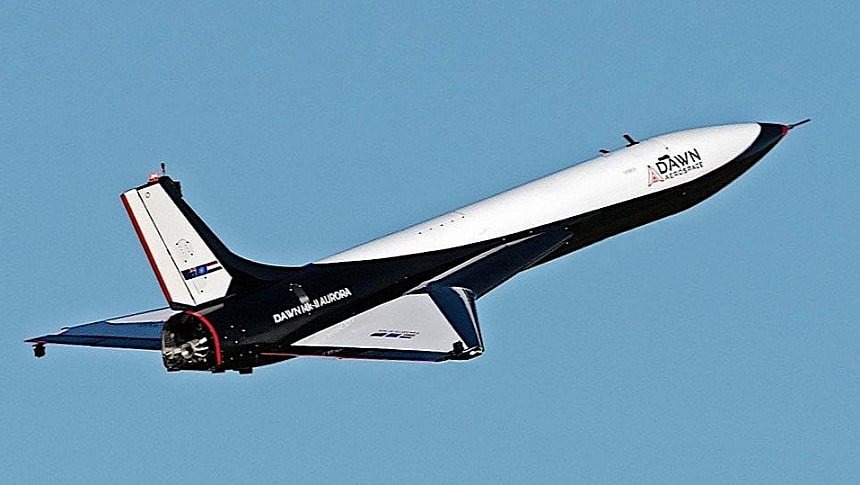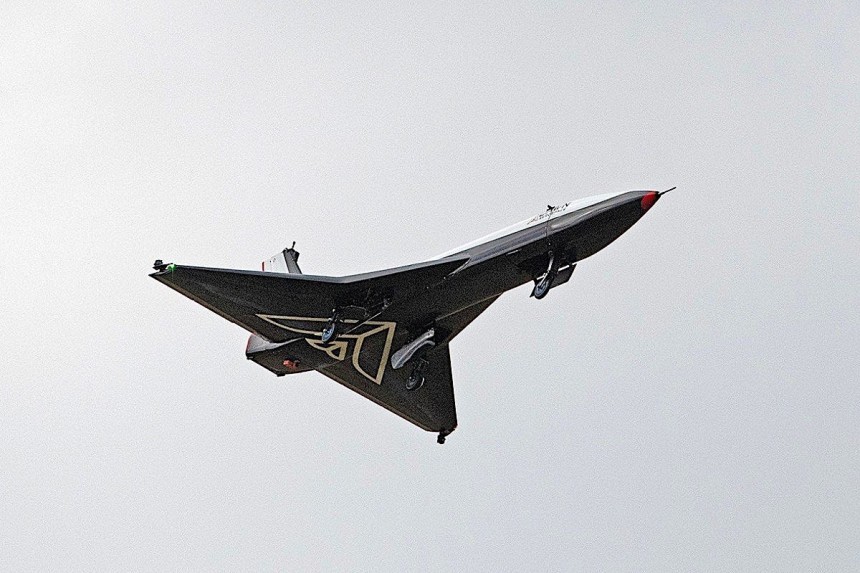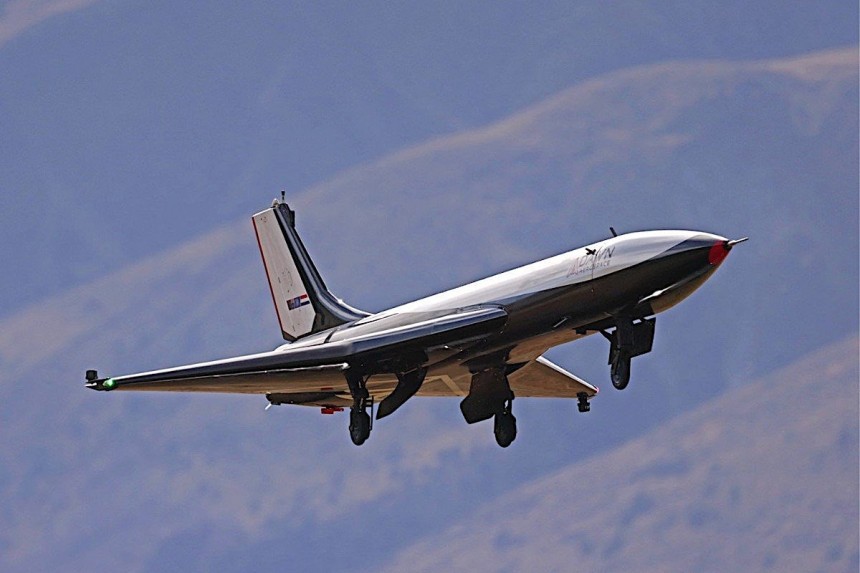The space exploration business is booming in our day and age, and that is owed, not it small part, to the countless startups that provide transportation to space for all those who need it. But whereas most of these companies do this by using conventional rockets topped by capsules, there are some pondering the idea of using spaceplanes of various kinds instead.
One of the companies doing this is called Dawn Aerospace, a group headquartered in both the Netherlands and New Zealand. It's been around since 2017, and its stated goal is to become a supplier of end-to-end space transportation services.
In the time it has been around, Dawn got involved in both satellite propulsion and space launches, and it's the latter side of the business that's of interest to us today. That's because these guys are working on a rocket-powered aircraft that will be capable of doing something no other space vehicle is capable of doing: flying on missions multiple times per day right into space.
The project is in the early testing stages and is referred to as the Mk-II Aurora. It has been in the news for about three years now, since it went into the sky for the first time back in 2021. Now that the plane has passed a crucial milestone, a closer look at it might be in order.
That crucial milestone is the clearance to fly at unlimited speeds and at altitudes of up to 80,000 feet (24,400 meters). It's a green light that only applies to the space controlled by the New Zealand Civil Aviation Authority (CAA), but one that will really open the road for the Aurora to be turn into something humanity could use.
Dawn started flying the Aurora more seriously this year. Whereas up until now it used surrogate jet engines to do that, this March the spaceplane used a rocket engine to get about its business. The flights took place at the Glentanner Aerodrome in New Zealand and targeted the validation of systems and capabilities, not speed and altitude.
The flights were conducted using a hydrogen peroxide and kerosene rocket engine that allowed the plane to hit speeds of 230 mph (370 kph) and altitudes of 9,000 feet (2,700 meters).
Given the success of those tests (which concluded on July 12 and brought the total to some 50 flights so far), the company is now looking to begin speed and altitude trials as well, and the CAA clearance naturally helps with that.
But what is the Aurora? I think it's easier to say what it is not: although meant to reach space, it is neither a rocket nor a spaceplane. And it also doesn't need a carrier aircraft as a launch platform.
Aurora is technically a drone, as it will fly with no crew on board. It will take off and land like a conventional aircraft, horizontally from a runway, meaning it requires no launch pad or other supporting infrastructure.
When ready for duty, the spaceplane should be capable of transporting cargo to altitudes and at speeds that are higher than "any prior aircraft that takes off from a runway, including the current record holder, the SR-71 Blackbird."
As a reminder, the mighty spy plane reached 2,193.2 mph (3,529.6 kph) and flew at 85,068.997 feet (25,929 meters). We don't know the exact top speed the Aurora targets, but we do know it will go over the 62-mile (100 km) Karman line that separates Earth from space.
Now that it's cleared to fly as fast as it can, Dawn will move the Mk-II into the next stage of the test flight campaign. Over the course of the next three months, from July to September, up to a dozen flights will be performed with clear goals in mind.
The most important thing on the agenda is getting the rocket-powered UAV to reach Mach 1.1 (844 mph/1,258 kph) and an altitude of 70,000 feet (21,336 meters). This achievement should make it the "first privately funded UAV to break the sound barrier."
Then, Dawn will try to fly the plane two times a day, thus demonstrating the design's game-changing reusability.
When the test program for the Mk-II ends, the company plans to roll out the Mk-III. This version of the Aurora will be a two-stage orbital vehicle capable of transporting over one ton of cargo on suborbital flights and up to 550 pounds (250 kg) to low-Earth orbit.
"The most rapidly reusable rocket-powered aircraft in operation," as Dawn calls the end design, will serve a variety of needs, from research in fields like microgravity and Earth observation to the transport of satellites into orbit. Defense applications are also on the table for the plane.
At the time of writing there is no set date for when the commercial version of the Aurora should be ready, but we will keep an eye out as things unfold and update when appropriate.
In the time it has been around, Dawn got involved in both satellite propulsion and space launches, and it's the latter side of the business that's of interest to us today. That's because these guys are working on a rocket-powered aircraft that will be capable of doing something no other space vehicle is capable of doing: flying on missions multiple times per day right into space.
The project is in the early testing stages and is referred to as the Mk-II Aurora. It has been in the news for about three years now, since it went into the sky for the first time back in 2021. Now that the plane has passed a crucial milestone, a closer look at it might be in order.
That crucial milestone is the clearance to fly at unlimited speeds and at altitudes of up to 80,000 feet (24,400 meters). It's a green light that only applies to the space controlled by the New Zealand Civil Aviation Authority (CAA), but one that will really open the road for the Aurora to be turn into something humanity could use.
Dawn started flying the Aurora more seriously this year. Whereas up until now it used surrogate jet engines to do that, this March the spaceplane used a rocket engine to get about its business. The flights took place at the Glentanner Aerodrome in New Zealand and targeted the validation of systems and capabilities, not speed and altitude.
Given the success of those tests (which concluded on July 12 and brought the total to some 50 flights so far), the company is now looking to begin speed and altitude trials as well, and the CAA clearance naturally helps with that.
But what is the Aurora? I think it's easier to say what it is not: although meant to reach space, it is neither a rocket nor a spaceplane. And it also doesn't need a carrier aircraft as a launch platform.
Aurora is technically a drone, as it will fly with no crew on board. It will take off and land like a conventional aircraft, horizontally from a runway, meaning it requires no launch pad or other supporting infrastructure.
When ready for duty, the spaceplane should be capable of transporting cargo to altitudes and at speeds that are higher than "any prior aircraft that takes off from a runway, including the current record holder, the SR-71 Blackbird."
As a reminder, the mighty spy plane reached 2,193.2 mph (3,529.6 kph) and flew at 85,068.997 feet (25,929 meters). We don't know the exact top speed the Aurora targets, but we do know it will go over the 62-mile (100 km) Karman line that separates Earth from space.
The most important thing on the agenda is getting the rocket-powered UAV to reach Mach 1.1 (844 mph/1,258 kph) and an altitude of 70,000 feet (21,336 meters). This achievement should make it the "first privately funded UAV to break the sound barrier."
Then, Dawn will try to fly the plane two times a day, thus demonstrating the design's game-changing reusability.
When the test program for the Mk-II ends, the company plans to roll out the Mk-III. This version of the Aurora will be a two-stage orbital vehicle capable of transporting over one ton of cargo on suborbital flights and up to 550 pounds (250 kg) to low-Earth orbit.
"The most rapidly reusable rocket-powered aircraft in operation," as Dawn calls the end design, will serve a variety of needs, from research in fields like microgravity and Earth observation to the transport of satellites into orbit. Defense applications are also on the table for the plane.
At the time of writing there is no set date for when the commercial version of the Aurora should be ready, but we will keep an eye out as things unfold and update when appropriate.













